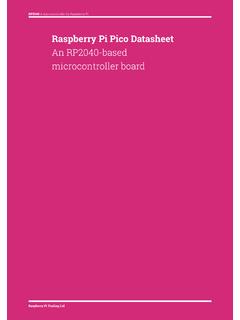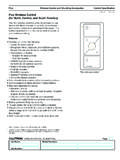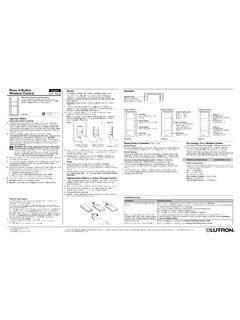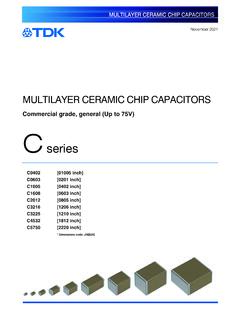Transcription of ESP32PICOD4 - Espressif
1 ESP32 pico D4 DatasheetVersion SystemsCopyright This DocumentThis document provides an introduction to the specifications of the ESP32- pico -D4 UpdatesPlease always refer to the latest version HistoryFor revision history of this document, please refer to thelast Change NotificationEspressif provides email notifications to keep customers updated on changes to technical subscribe Note that you need to update your subscription to receivenotifications of new products you are not currently subscribed certificates for Espressif products Overview62 Pin Pin Pin Strapping Pins103 Functional CPU and Internal External Flash and Crystal RTC and Power Consumption124 Peripherals and Sensors145 Electrical Absolute Maximum Recommended Operating DC Characteristics ( V, 25 C) Wi-Fi Bluetooth LE Reflow Profile186 Schematics197 Peripheral Schematics208 Package Information219 Related Documentation and Resources24 Revision History25 List of Tables1 ESP32- pico -D4 Specifications62 Pin Description83 Strapping Pins114 Absolute Maximum Ratings155 Recommended Operating Conditions156 DC Characteristics ( V, 25 C)157 Wi-Fi Radio Characteristics168 Receiver Characteristics BLE179 Transmitter Characteristics BLE17 List of Figures1 ESP32- pico -D4 Pin Layout (Top View)82 Reflow Profile183 ESP32- pico -D4 Module Schematics194 ESP32- pico -D4 Module Peripheral Schematics205 ESP32- pico -D4 Package216 ESP32- pico -D4 PCB Land Pattern227 ESP32- pico -D4 STENCIL231 Overview1 OverviewThe ESP32- pico -D4 is a System-in-Package (SiP) module that is based on ESP32, providing complete Wi-Fiand Bluetooth functionalities.
2 The module has a size as small as ( ) mm ( ) mm ( ) mm, thus requiring minimal PCB area. The module integrates a 4-MB SPI the core of this module is the ESP32 chip*, which is a single GHz Wi-Fi and Bluetooth combo chipdesigned with TSMC s 40 nm ultra-low power technology. ESP32- pico -D4 integrates all peripheral componentsseamlessly, including a crystal oscillator, flash, filter capacitors and RF matching links in one single package, seeSection6:Schematics. Given that no other peripheral components are involved, module welding and testing isnot required either. As such, ESP32- pico -D4 reduces the complexity of supply chain and improves its ultra-small size, robust performance and low-energy consumption, ESP32- pico -D4 is well suited for anyspace-limited or battery-operated applications, such as wearable electronics, medical equipment, sensors andother IoT :* For details on ESP32, please refer to the documentESP32 the specifications of the ESP32- pico -D4 1.
3 ESP32 pico D4 SpecificationsCategoriesItemsSpecificati onsCertificationBluetooth b/g/n ( up to 150 Mbps)A-MPDU and A-MSDU aggregation and s guard intervalsupportCenter frequency range of oper-ating channel2412~2484 MHzBluetoothProtocolsBluetooth BR/EDR and Bluetooth LE specificationRadioNZIF receiver with 97 dBm sensitivityClass-1, class-2 and class-3 transmitterAFHA udioCVSD and SBCH ardwareModule interfacesADC, DAC, touch sensor, SD/SDIO/MMC Host Controller,SPI, SDIO/SPI Slave Controller, EMAC, motor PWM, LEDPWM, UART, I2C, I2S, infrared remote controller, GPIO,pulse counter, TWAI (compatible with ISO 11898-1, Specification )On-chip sensorHall sensorIntegrated crystal40 MHz crystalIntegrated SPI flash4 MBOperating voltage/Power V~ VOperating currentAverage: 80 mAEspressif Systems6 Submit Documentation FeedbackESP32- pico -D4 Datasheet OverviewCategoriesItemsSpecificationsMin imum current delivered bypower supply500 mAOperating ambient temperature 40 C~85 CPackage size( ) mm ( ) mm ( ) mmMoisture sensitivity level (MSL)Level 3 Espressif Systems7 Submit Documentation FeedbackESP32- pico -D4 Datasheet Pin Definitions2 Pin LayoutIO3212IO351110987654321IO34 ENSENSOR_VNSENSOR_CAPNSENSOR_CAPPSENSOR_ VPVDDA3P3 VDDA3P3 LNA_INVDDA252627282930313233343536IO16 VDD_SDIOIO5 VDD3P3_CPU37IO193839404142434445464748IO 22U0 RXDU0 TXDIO21 XTAL_N_NCXTAL_P_NCVDDACAP2_NCCAP1_NCIO22 4IO152322212019181716151413IO13 VDD3P3_RTCIO12IO14IO27IO26IO25IO3349 GNDSD2SD3 CMDCLKSD0SD1IO4IO0IO23IO18 VDDAIO17 Figure 1: ESP32 pico D4 Pin Layout (Top View) DescriptionThe ESP32- pico -D4 module has 48 pins.
4 See pin definitions in 2: Pin power supply ( V~ V)LNA_IN2I/ORF input and outputEspressif Systems8 Submit Documentation FeedbackESP32- pico -D4 Datasheet Pin power supply ( V~ V)VDDA3P34 PAnalog power supply ( V~ V)SENSOR_VP5 IGPIO36, ADC1_CH0, RTC_GPIO0 SENSOR_CAPP6 IGPIO37, ADC1_CH1, RTC_GPIO1 SENSOR_CAPN7 IGPIO38, ADC1_CH2, RTC_GPIO2 SENSOR_VN8 IGPIO39, ADC1_CH3, RTC_GPIO3EN9 IHigh: On; enables the moduleLow: Off; the module powers offNote: Do not leave this pin , ADC1_CH6, RTC_GPIO4IO3511 IGPIO35, ADC1_CH7, RTC_GPIO5IO3212I/OGPIO32, 32K_XP ( kHz crystal oscillator input), ADC1_CH4,TOUCH9, RTC_GPIO9IO3313I/OGPIO33, 32K_XN ( kHz crystal oscillator output), ADC1_CH5,TOUCH8, RTC_GPIO8IO2514I/OGPIO25, DAC_1, ADC2_CH8, RTC_GPIO6, EMAC_RXD0IO2615I/OGPIO26, DAC_2, ADC2_CH9, RTC_GPIO7, EMAC_RXD1IO2716I/OGPIO27, ADC2_CH7, TOUCH7, RTC_GPIO17, EMAC_RX_DVIO1417I/OGPIO14, ADC2_CH6, TOUCH6, RTC_GPIO16, MTMS, HSPICLK,HS2_CLK, SD_CLK, EMAC_TXD2IO1218I/OGPIO12, ADC2_CH5, TOUCH5, RTC_GPIO15, MTDI, HSPIQ,HS2_DATA2, SD_DATA2, EMAC_TXD3 VDD3P3_RTC19 PInput power supply for RTC IO ( V~ V)
5 IO1320I/OGPIO13, ADC2_CH4, TOUCH4, RTC_GPIO14, MTCK, HSPID,HS2_DATA3, SD_DATA3, EMAC_RX_ERIO1521I/OGPIO15, ADC2_CH3, TOUCH3, RTC_GPIO13, MTDO, HSPICS0,HS2_CMD, SD_CMD, EMAC_RXD3IO222I/OGPIO2, ADC2_CH2, TOUCH2, RTC_GPIO12, HSPIWP, HS2_DATA0,SD_DATA0IO023I/OGPIO0, ADC2_CH1, TOUCH1, RTC_GPIO11, CLK_OUT1,EMAC_TX_CLKIO424I/OGPIO4, ADC2_CH0, TOUCH0, RTC_GPIO10, HSPIHD, HS2_DATA1,SD_DATA1, EMAC_TX_ERIO1625I/OGPIO16, HS1_DATA4, U2 RXD, EMAC_CLK_OUTVDD_SDIO26 POutput power supply. Seenote 1under the , HS1_DATA5, U2 TXD, EMAC_CLK_OUT_180SD228I/OGPIO9, SD_DATA2, SPIHD, HS1_DATA2, U1 RXDSD329I/OGPIO10, SD_DATA3, SPIWP, HS1_DATA3, U1 TXDCMD30I/OGPIO11, SD_CMD, SPICS0, HS1_CMD, U1 RTSCLK31I/OGPIO6, SD_CLK, SPICLK, HS1_CLK, U1 CTSSD032I/OGPIO7, SD_DATA0, SPIQ, HS1_DATA0, U2 RTSSD133I/OGPIO8, SD_DATA1, SPID, HS1_DATA1, U2 CTSIO534I/OGPIO5, VSPICS0, HS1_DATA6, EMAC_RX_CLKIO1835I/OGPIO18, VSPICLK, HS1_DATA7 Espressif Systems9 Submit Documentation FeedbackESP32- pico -D4 Datasheet Pin , VSPID, HS1_STROBEVDD3P3_CPU37 PInput power supply for CPU IO ( V~ V)IO1938I/OGPIO19, VSPIQ, U0 CTS, EMAC_TXD0IO2239I/OGPIO22, VSPIWP, U0 RTS, EMAC_TXD1U0 RXD40I/OGPIO3, U0 RXD, CLK_OUT2U0 TXD41I/OGPIO1, U0 TXD, CLK_OUT3, EMAC_RXD2IO2142I/OGPIO21, VSPIHD, EMAC_TX_ENVDDA43 PAnalog power supply ( V~ V)XTAL_N_NC44-NCXTAL_P_NC45-NCVDDA46 PAnalog power supply ( V~ V)
6 CAP2_NC47-NCCAP1_NC48- that the embedded flash is connected to VDD_SDIO which is driven directly by VDD3P3_RTC through a 6 resistor. Due to this resistor, there is some voltage drop on this pin from IO16, IO17, CMD, CLK, SD0 and SD1 are used to connect the embedded flash, and can not be used forother purposes. For details, please see connecting external PSRAM, SD3 (GPIO10) is recommended for PSRAM_CS. For details, please see Section7 Peripheral PinsESP32 has five strapping pins, which can be seen in Chapter6 Schematics: MTDI GPIO0 GPIO2 MTDO GPIO5 Software can read the values of these five bits from register GPIO_STRAPPING .During the chip s system reset release (power-on-reset, RTC watchdog reset and brownout reset), the latches ofthe strapping pins sample the voltage level as strapping bits of 0 or 1 , and hold these bits until the chip ispowered down or shut down. The strapping bits configure the device s boot mode, the operating voltage ofVDD_SDIO and other initial system strapping pin is connected to its internal pull-up/pull-down during the chip reset.
7 Consequently, if astrapping pin is unconnected or the connected external circuit is high-impedance, the internal weakpull-up/pull-down will determine the default input level of the strapping change the strapping bit values, users can apply the external pull-down/pull-up resistances, or use the hostMCU s GPIOs to control the voltage level of these pins when powering on Systems10 Submit Documentation FeedbackESP32- pico -D4 Datasheet Pin DefinitionsAfter reset release, the strapping pins work as normal-function to Table3for a detailed boot-mode configuration by strapping 3: Strapping PinsVoltage of Internal LDO (VDD_SDIO) VMTDIPull-down01 Booting ModePinDefaultSPI BootDownload BootGPIO0 Pull-up10 GPIO2 Pull-downDon t-care0 Enabling/Disabling Debugging Log Print over U0 TXD During BootingPinDefaultU0 TXD ActiveU0 TXD SilentMTDOPull-up10 Timing of SDIO SlavePinDefaultFE SamplingFE OutputFE SamplingRE OutputRE SamplingFE OutputRE SamplingRE OutputMTDOPull-up0011 GPIO5 Pull-up0101 Note: Firmware can configure register bits to change the settings of Voltage of Internal LDO (VDD_SDIO) and Timingof SDIO Slave , after booting.
8 The operating voltage of ESP32- pico -D4 s integrated external SPI flash is V. Therefore, the strapping pin MTDI should hold bit 0 during the module power-on Systems11 Submit Documentation FeedbackESP32- pico -D4 Datasheet Functional Descriptions3 Functional DescriptionsThis chapter describes the modules integrated in ESP32- pico -D4, and their and Internal MemoryESP32 contains two low-power Xtensa 32-bit LX6 microprocessors. The internal memory includes: 448 KB of ROM for booting and core functions. 520 KB of on-chip SRAM for data and instructions. 8 KB of SRAM in RTC, which is called RTC FAST Memory and can be used for data storage; it is accessedby the main CPU during RTC Boot from the Deep-sleep mode. 8 KB of SRAM in RTC, which is called RTC SLOW Memory and can be accessed by the co-processorduring the Deep-sleep mode. 1 Kbit of eFuse: 256 bits are used for the system (MAC address and chip configuration) and the remaining768 bits are reserved for customer applications, including flash-encryption and Flash and SRAMESP32 supports multiple external QSPI flash and SRAM chips.
9 More details can be found in Chapter SPI in theESP32 Technical Reference Manual. ESP32 also supports hardware encryption/decryption based on AES toprotect developers programs and data in can access the external QSPI flash and SRAM through high-speed caches. The external flash can be mapped into CPU instruction memory space and read-only memory spacesimultaneously. When external flash is mapped into CPU instruction memory space, up to 11 MB + 248 KB can bemapped at a time. Note that if more than 3 MB + 248 KB are mapped, cache performance will bereduced due to speculative reads by the CPU. When external flash is mapped into read-only data memory space, up to 4 MB can be mapped at atime. 8-bit, 16-bit and 32-bit reads are supported. External SRAM can be mapped into CPU data memory space. Up to 4 MB can be mapped at a , 16-bit and 32-bit reads and writes are ESP32- pico -D4 module integrates 4 MB of external SPI OscillatorsESP32- pico -D4 integrates a 40 MHz crystal and Power ConsumptionWith the use of advanced power-management technologies, ESP32 can switch between different Systems12 Submit Documentation FeedbackESP32- pico -D4 Datasheet Functional DescriptionsFor details on ESP32 s power consumption in different power modes, please refer to section RTC andLow-Power Management inESP32 Systems13 Submit Documentation FeedbackESP32- pico -D4 Datasheet Peripherals and Sensors4 Peripherals and SensorsPlease refer to Section Peripherals and Sensors inESP32 : Pins IO16, IO17, CMD, CLK, SD0 and SD1 are used for connecting the embedded flash, and are not recommendedfor other uses.
10 For details, please see Section6 Schematics. For connecting external PSRAM, SD3 (GPIO10) is recommended for PSRAM_CS. For details, please see Section7 Peripheral Systems14 Submit Documentation FeedbackESP32- pico -D4 Datasheet Electrical Characteristics5 Electrical Maximum RatingsStresses beyond the absolute maximum ratings listed in the table below may cause permanent damage to thedevice. These are stress ratings only, and do not refer to the functional operation of the device that should followtherecommended operating 4: Absolute Maximum RatingsSymbolParameterMinMaxUnitVDD33 Power supply voltage IO output current-1,100mATstoreStorage temperature 4085 module worked properly after a 24-hour test in ambient temperature at 25 C, and the IOs in three domains(VDD3P3_RTC, VDD3P3_CPU, VDD_SDIO) output high logic level to ground. Please note that pins occupied by flashand/or PSRAM in the VDD_SDIO power domain were excluded from the see Appendix IO_MUX ofESP32 Datasheetfor IO s power Operating ConditionsTable 5: Recommended Operating ConditionsSymbolParameterMinTypicalMaxUn itVDD33 Power supply DDCurrent delivered by external power ambient temperature 40-85 Characteristics ( V, 25 C)Table 6.














